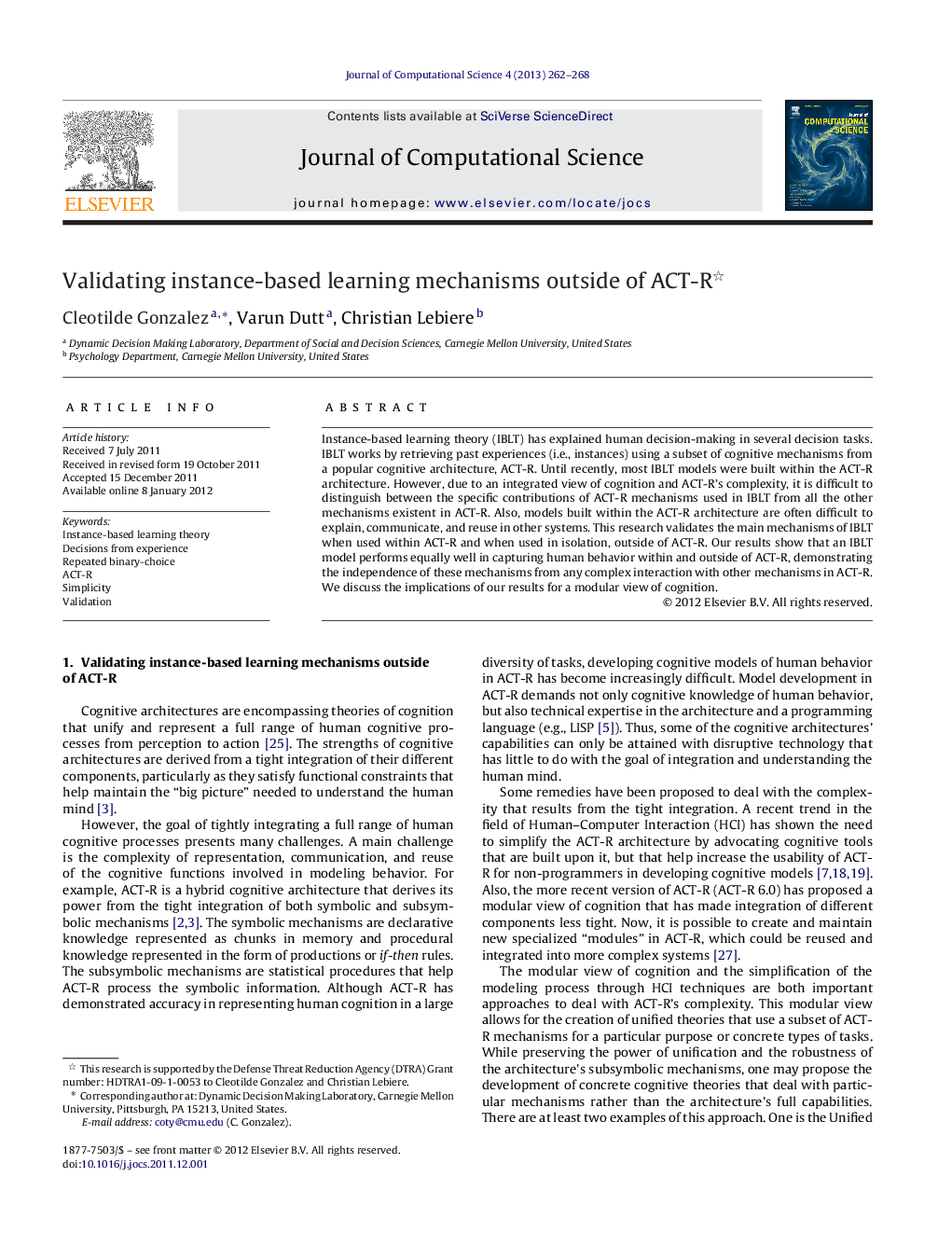| Article ID | Journal | Published Year | Pages | File Type |
|---|---|---|---|---|
| 429417 | Journal of Computational Science | 2013 | 7 Pages |
Instance-based learning theory (IBLT) has explained human decision-making in several decision tasks. IBLT works by retrieving past experiences (i.e., instances) using a subset of cognitive mechanisms from a popular cognitive architecture, ACT-R. Until recently, most IBLT models were built within the ACT-R architecture. However, due to an integrated view of cognition and ACT-R's complexity, it is difficult to distinguish between the specific contributions of ACT-R mechanisms used in IBLT from all the other mechanisms existent in ACT-R. Also, models built within the ACT-R architecture are often difficult to explain, communicate, and reuse in other systems. This research validates the main mechanisms of IBLT when used within ACT-R and when used in isolation, outside of ACT-R. Our results show that an IBLT model performs equally well in capturing human behavior within and outside of ACT-R, demonstrating the independence of these mechanisms from any complex interaction with other mechanisms in ACT-R. We discuss the implications of our results for a modular view of cognition.
► Research validates the mechanisms of IBL models built outside of ACT-R. ► Same model built in ACT-R, Visual Basic, and Excel produced similar accurate results. ► ACT-R mechanisms work similarly within and outside of its native architecture.
